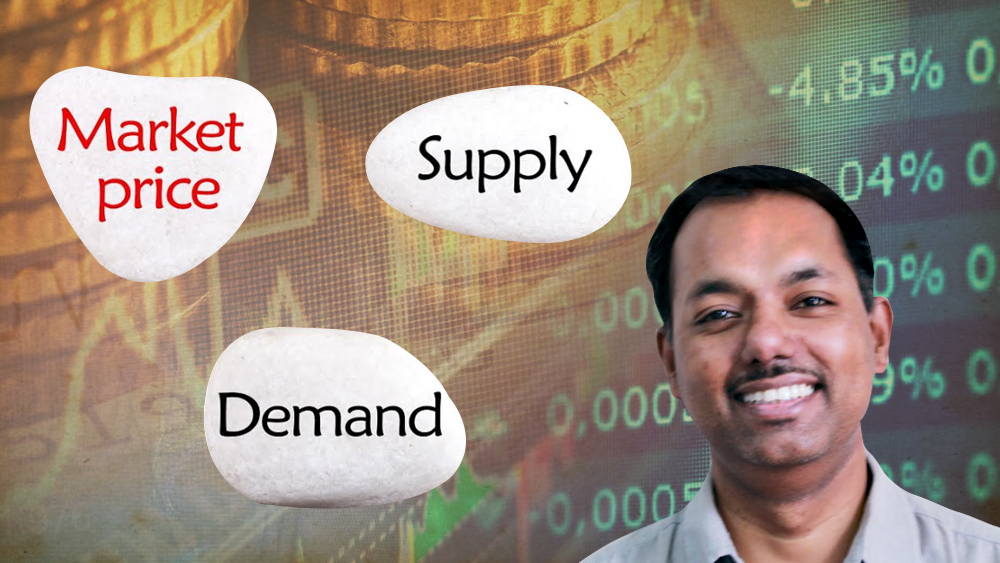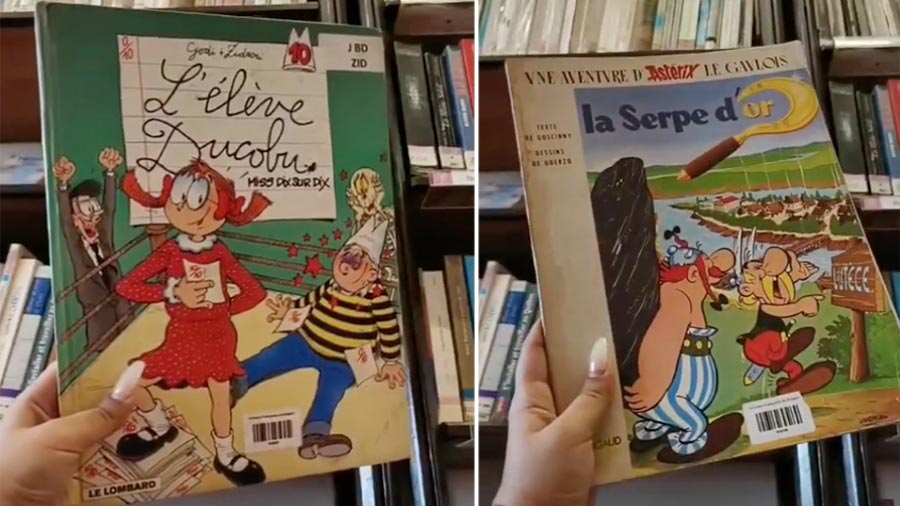Father, son and a stubborn donkey
Whenever I tell people that I teach economics, more often than not I get either of the two (and sometimes both) – “Economics? That’s a difficult subject!” and “What can you tell me about the stock market?”. If you have started studying economics, you probably have already encountered these reactions. Before going any further, let me assure you that both these perceptions are misplaced.
Most of the topics covered in the discipline of Economics have nothing to do with stock markets and despite your Economics textbooks looking Greek with equations and diagrams, the basic tenet of Economics is elegantly simple. In fact, this is as simple as Aesop’s fable where a father and a son go out with their donkey.
Let me remind you of the story. In the story, a father and his son started for a far-off place with their donkey. Things started to get interesting when some passer-by called them fools as they could easily save some energy by riding the donkey instead of walking. They liked the idea. But as soon as they got on the donkey, they were told by another passer-by that they were being cruel to the poor animal by putting too much weight on it. Then they tried other options – only father riding the donkey or the son. But nothing could save them from being ridiculed – either the father was called selfish or the son depending on who rode the donkey and who walked.
Finally, they came across the most ridiculous solution of tying the donkey on a pole and carrying it on their shoulders! The problem faced by the father-son duo is the central problem of economics – it is the problem of allocating a resource when faced with incentive constraints.
If you have started to compare your textbooks with the story written above, you must have noticed a big mismatch. The initial chapters of your textbook are all riddled with demand and supply curves where you plot one’s demand and supply response against prices. But in the story written above there is no price!
Let me assure you that price is not a prerequisite for economic analysis. (By price, I mean the money that exchanges hands at the time of a purchase, and not the rhetorical “price” you pay for your sins. The rhetorical “price” which we call disutility in the jargon of economics is however, absolutely important no matter what you analyze in economics.) Economics in its essence analyses people’s behavior under incentives, a bulk of which comes in the form of price. But price is the artifact of an institution called market. Even though the market governs most of the interactions we face in our modern life, it is not the only one.
There are situations where state or family is the governing institution and consequently price is not part of the incentive structure. Think of the problem faced by a litigant deciding on whether to bring a lawsuit or by members of a bank robbers’ gang deciding whether to defect on their partners – we often use game theory to analyze these problems without involving any price mechanism.
The curious case of kidney transplantation
There are also allocation problems where price cannot be charged for ethical reasons and methods of economics are used there nonetheless. One such important example is organ donation. Suppose a person needs a kidney to be transplanted. How do we meet such demand? Allowing the market in kidney transplantation would mean identification of the forces of demand and supply in the kidney market and a mechanism of price determination. The demand comes from the patients whose kidneys stopped working. The supply of kidneys mostly come from cadavers, but in some cases, they come from living donors.
Allowing for price mechanism to meet the demand and supply gap (which in economics jargon is called finding the equilibrium) may lead to a program where the patients or their family members will participate in a bidding process in which the patients get kidney according to the descending order of the bids – the highest bidder gets the first kidney; the second highest bidder gets the second kidney and so on. But organ trading is deemed unethical and therefore the existing laws don’t allow for it (we cannot rule out illegal organ trade, and that too can be analyzed using economics. But for now, we focus on what is considered legal).
In order to design a non-market institution to the allocation we need to understand what a market does. It essentially matches between a buyer and seller based on buyer’s maximum willingness to pay and seller’s minimum acceptable price. But this matching can be done based on other information parameters, thereby allowing us to solve the problem by bypassing the market. Remember most of the kidneys come from cadavers where usually the first come, first served basis, where the waiting time is the “price”. More interesting is the case of live kidney transplantation where the kidney comes from a voluntary, live donor.
Consider the following example where Aslam from Kolkata and Tania from Mumbai need kidney transplant. Aslam’s wife, Zareena wants to give her kidney for her husband while Tania’s husband Sameer also wants to give his kidney for his wife. But unfortunately, none of the voluntary donor’s kidney matches with that of his/her respective spouses. However, Zareena’s kidney is a match for Tania while Sameer’s kidney is a match for Aslam. Hence, the kidney transplantation can be done quite fast if Aslam’s case can be matched with Tania’s case. But how can Aslam’s doctors know about Tania’s case?
Newspaper advertisement is an option, albeit inefficient. It's not always easy to put up all the technical information on newspaper classifieds, not to mention the slim chance that these two couples read the same newspapers. Also, with thousands of such people in a country, the costs of processing such information are enormous. This is where economics steps in. Professor Alvin Roth won the Nobel prize in Economics in 2012 for designing an algorithm which can solve the problems of kidney exchange and similar matching problems where price mechanisms cannot be deployed for ethical and efficiency reasons. He shared the prize with Lloyd Shapley whose theory formed the basis of such an algorithm.
A study in market
The take away from the section above is quite simple. It tells us that Economics is all about understanding the matching mechanism between the demand and the supply sides and the price is not the only way to do such matching. What we really need is the information and market is one institution which brings out the information through price formation.
But why do our textbooks are dominated by market mechanisms? This is largely because the price mechanism captures information in a decentralised, less costly manner. The equilibrium that follows from a market mechanism allocates resources without having to recourse to some central information processing.
But that does not make the market-based allocations either the efficient or the ethical ones. It is not difficult to see how markets can be unethical; the kidney example has already made the point. But does the market always lead to efficiency? The word “efficiency” is a jargon in economics and a general definition of efficiency is beyond the scope of this article.
Whenever I discuss efficiency, I will simply describe what an efficient outcome means in a particular setting. Consider the case of allocating seats in engineering colleges among students. If we allow for price-based allocation rules (the highest bidder gets a seat in his/her most preferred college), the richest engineering aspirants will secure a berth at the highest ranked engineering colleges. This mechanism, besides being unethical, leads to an inefficient allocation rule too.
Ensuring efficiency, in this case would be to make sure that the best students get their most preferred colleges. In that way we can ensure good quality engineers in future. Given that one’s parental wealth cannot ensure that he/she is the best suited for studying engineering, price-based allocation rule leads to an inefficient solution.
Does it mean that the market is pure evil? Even though not at par with Dark Vader or “You know who” whose allocation rules always favored the wicked ones, the market can be called an evil, albeit a useful one! The biggest advantage of the market mechanism is that it involves less cost of information processing. But, as we have seen in the example of student allocation across engineering colleges, in many situations the market may fail to ensure the efficient allocations, let alone the ethical ones.
Such cases particularly happen, when information becomes too complex to be captured through prices. Harping on the engineering college example, it is fair to state that the price a couple is ready to pay to secure a berth for their child in a reputed college does not embed much useful information regarding the child’s ability to study engineering. Hence, if deployed in cases with complex, unverifiable and often hidden information, the price-based mechanism will produce undesirable outcomes (bad engineers in the above example). This is why all the efficiency results of the market works the best in the fairy tale world of perfect competition where by construction, information asymmetries have been banished.
In order to understand the role information plays, let us now go back to Aesop's story and introduce the market. In the original version of the story, the cost of different decisions made by the father-son duo is the stigma of not conforming to the social norm. The father-son duo did not know what the social norm is and from the comments from the passers-by they were updating their belief about the social norm and as the beliefs keep changed radically, so did their actions.
So, what happens if we introduce the market in the Aesop’s tale? Suppose, the donkey runs a service (named “Don of the Load”) of carrying load on his back and his rate is Rs. 10 per kg. The donkey however, is happy to walk without any load for free. Further suppose that the father weighs say 100 kgs while the weight of the son is 50 kg. So, at this rate, the donkey will charge Rs. 1000 to carry the father and Rs. 500 to carry the son. Now suppose, the family has Rs. 300 to spare. Then all three (the father, the son and the ‘greedy’ donkey) must walk and no amount of social ridicule can change the outcome. The amount the family is ready to spare to avoid the exhaustion of walking and the cost of replenishment for the donkey is all captured in the information given above which in turn get reflected in this equilibrium.
The situation changes if the family has Rs. 600 in which case the son gets to ride the donkey but the father does not. A more interesting case emerges when the family has Rs.1000 to spare. This means that either the father or the son gets to ride and the market cannot determine the outcome. (We assume that no other market exists in the world and therefore, people are indifferent to savings! There are many real-world parallels of such a scenario. This is like getting a Rs. 100 coupon from a business establishment. You can use it once and no carry over to the next transaction is allowed).
In this situation, we are back to Aesop’s original story where the family could not decide who would ride the donkey and extra-market norms (e.g. people in certain age groups get the extra benefit. It could be the father or son depending on the social norm) may provide the incentive to choose one over the other.
Beside the social norm or price, other mechanisms can also be deployed. For example, the father and son may engage in a game of chess and decide that the winner gets to ride the donkey. But what if we add some extra information? What if we know that the father is terminally ill? In this case, letting the father ride the donkey is not only ethical but also efficient where the efficient outcome is the one which takes minimum possible time to reach the destination. Because, weak from his illness, the father cannot walk very fast and that will increase the time taken to reach their destination. This simple example is making the point that when we introduce new information, the price mechanism may find it difficult to internalise it and reach an efficient allocation.
Back to the future
But the pervasiveness of markets in textbooks seems to be a mere reflection of our daily lives. Why does the market look all powerful now? After all, this was not the case in thousand years of human civilization. Whether the market emerges as the main institution for resource allocation often depends on objective conditions such as social heterogeneity, level of technology etc. If a village is populated by people from a specific family or community, then the resource allocation can simply be done by the elderly people of the family or community.
But the market has a better chance if the society is full of heterogeneous people which is the case as societies started getting more and more connected through the course of human civilisation. However, even if the society is populated by people with heterogeneous backgrounds, it still can take the non-market road if the level of information technology is sufficiently developed. Remember that the algorithm for matching kidneys would not be possible without the current level of technology.
To see how technology driven, non-market allocation mechanisms may look like in a futuristic, fictional setting you may watch Nosedive episode from web series Black Mirror (Season 3, episode 1) where all the allocations are determined by one’s reputation in social media. The web series may have taken the system to an extreme, but in virtual marketplaces we have already seen how, in presence of quality asymmetry, internet review systems can determine the fate of a product, restaurant or movie.
These days, one cannot sell products by simply making it cheaper than his/her competitors. Understanding how culture, market and technology interactions lead to allocation rules in the society is becoming the focus of newly emerging areas in Economics. If you find these issues interesting, studying economics can offer you a lot of excitement.
Anirban Mukherjee is assistant professor at the department of Economics, University of Calcutta. Before joining University of Calcutta, he taught at the department of Humanities and Social Sciences, Indian Institute of Technology Kanpur. An alumnus of Presidency College, Calcutta and the department of Economics, University of Calcutta, Anirban got his Ph.D from the department of Economics, University of British Columbia (currently known as Vancouver School of Economics). His interest areas are institutional economics, political economics, development economics and economic history.










